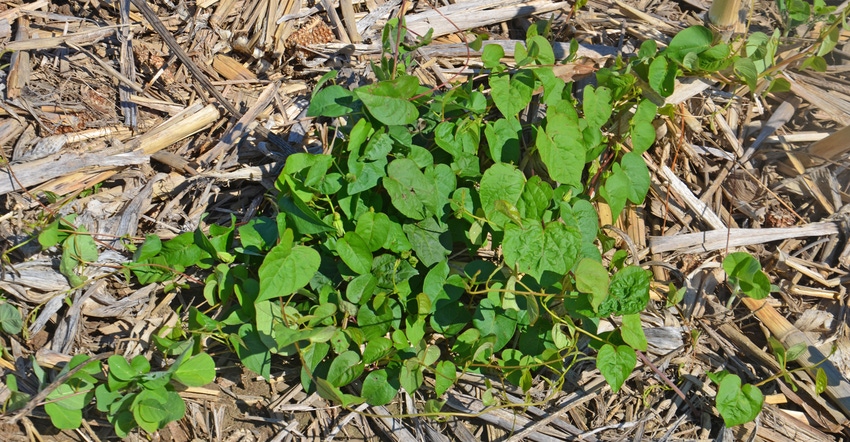
The best thing you can do if you’re walking across your no-till soybean field and spot this vine is to stop walking. Mark it on your smartphone with GPS. Note whether it’s a patch or an isolated vine.
“If it’s a patch of perennial vines, you will likely have to keep working on them — you won’t wipe them out with one herbicide application,” says Bill Johnson, Purdue University Extension weed control specialist.
If you’re lucky and it’s an annual, like morning glory, which doesn’t come back from roots each year, control should be easier, he says.
“The vine here is honeyvine milkweed,” Johnson says, after viewing it virtually. “It’s a perennial, and you can control it, but it will take some effort.”
It’s worth checking fencerows and edges of fields to try to keep them out in the first place, he says. If you find them there first, you can spray in the fall and limit their spread. Dicamba and 2,4-D are your best options.
If it’s already in the field, like this one, you can attack it in soybeans with dicamba or 2,4-D choline if you have Xtend or Xtendflex beans for dicamba or Enlist E3 soybeans for 2,4-D choline. If your beans don’t have those traits, Classic herbicide has some activity on it, Johnson says.
Either way, you will likely want to work on spots with these vines again in the fall with herbicides and in the spring where possible. The vine tends to emerge later in the spring.
About the Author(s)
You May Also Like




